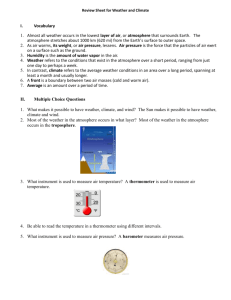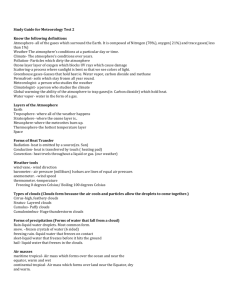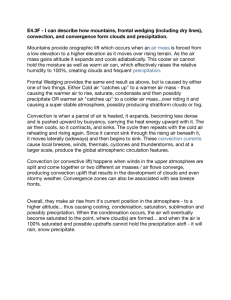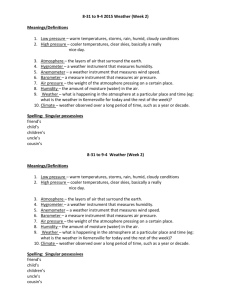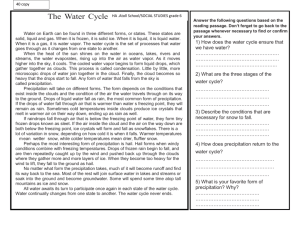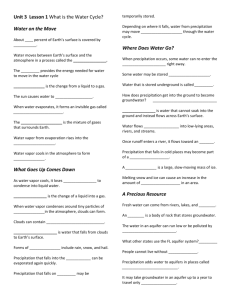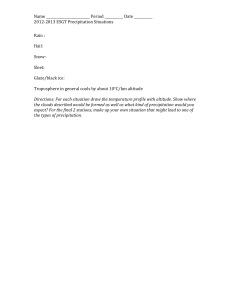Chapter 6 Science Test: BIG IDEA 7*Earth*s Patterns and Systems
advertisement
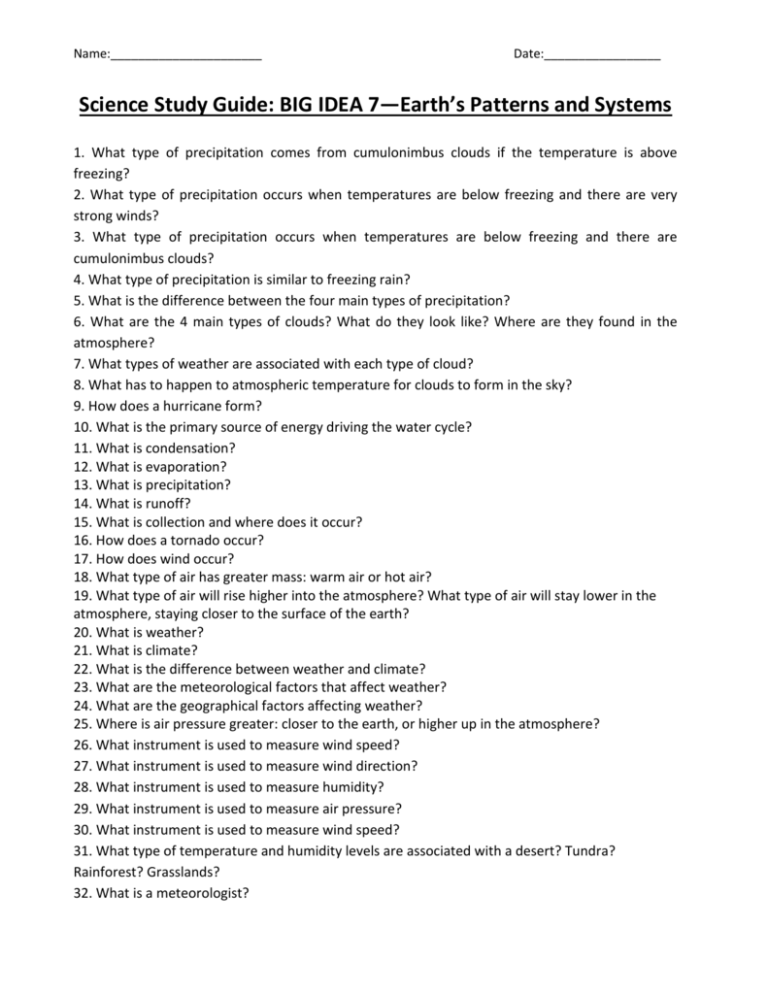
Name:______________________ Date:_________________ Science Study Guide: BIG IDEA 7—Earth’s Patterns and Systems 1. What type of precipitation comes from cumulonimbus clouds if the temperature is above freezing? 2. What type of precipitation occurs when temperatures are below freezing and there are very strong winds? 3. What type of precipitation occurs when temperatures are below freezing and there are cumulonimbus clouds? 4. What type of precipitation is similar to freezing rain? 5. What is the difference between the four main types of precipitation? 6. What are the 4 main types of clouds? What do they look like? Where are they found in the atmosphere? 7. What types of weather are associated with each type of cloud? 8. What has to happen to atmospheric temperature for clouds to form in the sky? 9. How does a hurricane form? 10. What is the primary source of energy driving the water cycle? 11. What is condensation? 12. What is evaporation? 13. What is precipitation? 14. What is runoff? 15. What is collection and where does it occur? 16. How does a tornado occur? 17. How does wind occur? 18. What type of air has greater mass: warm air or hot air? 19. What type of air will rise higher into the atmosphere? What type of air will stay lower in the atmosphere, staying closer to the surface of the earth? 20. What is weather? 21. What is climate? 22. What is the difference between weather and climate? 23. What are the meteorological factors that affect weather? 24. What are the geographical factors affecting weather? 25. Where is air pressure greater: closer to the earth, or higher up in the atmosphere? 26. What instrument is used to measure wind speed? 27. What instrument is used to measure wind direction? 28. What instrument is used to measure humidity? 29. What instrument is used to measure air pressure? 30. What instrument is used to measure wind speed? 31. What type of temperature and humidity levels are associated with a desert? Tundra? Rainforest? Grasslands? 32. What is a meteorologist?
